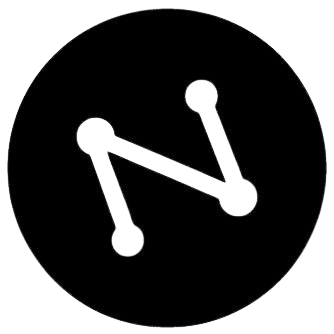
The routine of a healthcare clinic demands agility, precision, and coordination across various departments. However, many establishments still operate with manual processes that directly compromise productivity and financial results. From simple operational tasks to strategic activities, the lack of automation is a silent bottleneck that comes at a high cost.
While they may seem harmless, procedures like confirming appointments by phone, manually filling out insurance claim forms, or managing inventory in spreadsheets consume time, encourage errors, and limit the business's growth potential. In this article, we will explore why clinics lose money with manual processes and how technology can reverse this situation.
Before we continue, we need to ask: Are you already familiar with Ninsaúde Clinic? Ninsaúde Clinic is a medical software with an agile and complete schedule, electronic medical records with legal validity, teleconsultation, financial control and much more. Schedule a demonstration or try Ninsaúde Clinic right now!

The Hidden Cost of Manual Processes: Where Money Slips Away Unnoticed
Most managers recognize that manual processes are time-consuming, but few realize how much this represents in financial terms. Small, repetitive tasks such as scheduling appointments by phone, transcribing patient data, or confirming appointments one by one can add up to hundreds of work hours over a month.
Imagine a receptionist who takes an average of three minutes to confirm each appointment by phone. On a day with 40 scheduled appointments, that's 120 minutes—two full hours—spent on a single task that could be automated. These activities not only consume staff time but also lead to rework. An incorrectly scheduled appointment, for example, can result in a dissatisfied patient or a disorganized schedule. Likewise, manually filling out forms can lead to typing errors and the loss of relevant clinical information.
When there is no automation:
- Productivity is compromised.
- Patient response times are longer.
- Rework becomes frequent.
- The patient experience is negatively affected.
- Decision-making is based on guesswork, not data.
This set of inefficiencies directly impacts revenue and the clinic's ability to scale its operations sustainably.

Manual Insurance Billing: Errors, Denials, and Payment Delays
Billing health insurance plans is one of a clinic's most critical activities. When done manually, submitting claims becomes a source of problems: filling errors, late submissions, inconsistent information, and, consequently, recurring claim denials.
Claim denials, besides being frustrating, directly impact cash flow. Each rejected claim represents money that fails to come in and requires additional effort from the team to identify the error, correct it, and resubmit the charge. By relying on manual checks, the chance of human error increases significantly, turning the billing cycle into a slow and uncertain process.
Clinics that use systems like Ninsaúde Clinic can automate this process, issuing and sending electronic claims in batches, tracking their status in real-time, and generating reports that make it easy to quickly correct any pending issues.
Decentralized Financial Control: When the Numbers Never Add Up
Managing revenue and expenses in Excel spreadsheets is a common practice, but it is highly risky for a clinic's financial health. Decentralized financial control, spread across different files and without integration, leads to inconsistencies in records, difficulty in forecasting results, and a lack of a clear view of the business's profitability.
Common problems in clinics with this model include:
- Duplicate or forgotten entries.
- Difficulty tracking payments from patients and insurance companies.
- Lack of reliable cash flow or P&L (Profit & Loss) reports.
- Bank reconciliation done late or, in many cases, never at all.
A system with automatic bank reconciliation and integrated reports, like Ninsaúde Clinic, allows for more accurate and secure management, with decisions based on concrete, up-to-date data.

Inventory Without Traceability: Invisible Losses and Inefficient Restocking
Without automated control, inventory becomes one of the biggest sources of financial waste. Expired products, items over-purchased due to a lack of visibility, and the absence of basic supplies at the time of an appointment are common occurrences in clinics that use spreadsheets or manual paper-based controls.
These failures lead to:
- Direct losses from expired materials that must be discarded.
- Working capital tied up in unnecessary purchases.
- Interruptions in patient care due to lack of supplies, leading to dissatisfaction and loss of revenue.
Automation allows for real-time tracking of entries and exits, as well as configuring alerts for expiration dates and restocking needs, optimizing purchases and preventing losses.

Printing Documents and Paper Signatures: Legal Risks and Logistical Costs
The large-scale use of paper for clinical and administrative documentation generates obvious costs for printing, storage, and logistics, in addition to posing a significant legal risk. Consent forms, certificates, and paper medical records can be misplaced, damaged, or altered without a trace, exposing the clinic to lawsuits.
With digitalization and the use of electronic and digital signatures:
- Documents are stored securely in the cloud with automatic backups.
- Signatures have legal validity with a complete audit trail.
- Access to information by authorized professionals is faster and more efficient.
- Costs for paper, ink, printers, and physical space are drastically eliminated.
Ninsaúde Clinic, for example, offers integration with the Ninsaúde Sign platform, allowing any document to be digitally signed directly within the patient's electronic health record (EHR).

Lack of Integration Between Departments: Patient Care Stalls, and So Does Revenue
In clinics where departments do not communicate in an integrated way, the patient care workflow is constantly hindered. Information is passed verbally, jotted down on papers that get lost, or recorded in separate systems, which causes confusion, delays, and a poor impression on the patient.
Common examples of problems:
- Receptionists without a clear view of the patient's financial status at check-in.
- Billing staff struggling to locate the reports and documents needed for claims.
- Healthcare professionals without quick access to appointment or payment history.
Full integration of all departments—scheduling, reception, clinical care, billing, and finance—as offered by Ninsaúde Clinic, ensures a smooth operation, improves the patient experience from start to finish, and reduces operational losses caused by communication breakdowns.
Team Rework: Payroll Gets More Expensive, Needlessly
Repetitive and manual tasks lead to burnout, demotivate the team, and increase labor costs. Employees who could be focusing on strategic actions, such as improving patient relationships or optimizing processes, end up tied down to low-value operational activities.
Direct impacts on cost and organizational culture:
- The need to hire more staff to handle the same workload.
- An increase in overtime pay to finish accumulated tasks.
- Higher staff turnover due to burnout and low morale, which in turn generates more costs with recruitment, hiring, and training.
Automating tasks reduces the pressure on the team, improves the organizational climate, and allows the clinic's talent to be used more intelligently and strategically.

Technology as an Ally for Profitability: Automate with Intelligence
Resistance to technology is still present in many clinics, whether due to a fear of change, implementation costs, or a lack of awareness of the benefits. However, digitalization is not just a trend; it's a competitive necessity. Postponing this transition means continuing to lose money daily to inefficiencies that already have a solution.
By adopting a comprehensive management system like Ninsaúde Clinic, you can:
- Centralize scheduling, electronic health records, financials, and billing on a single platform.
- Eliminate repetitive tasks and drastically reduce waste.
- Gain revenue predictability through reports and performance indicators.
- Increase the security of patient data and legal compliance.
A clinic's profitability increases when processes are efficient, the team works focused on what truly matters, and managers make quick, data-driven decisions.
Going Digital is Saving Money: The Future of the Clinic Begins with Management
Manual processes are not just inefficient—they are proven to be costly. The time spent on operational tasks, the accumulated billing errors, inventory losses, and wasted business opportunities compromise the growth and financial health of any clinic.
Investing in automation and integration is no longer an option but a fundamental strategy for anyone seeking sustainability, competitiveness, and profitability. The path to a more profitable clinic begins with the decision to abandon paper, spreadsheets, and manual processes to embrace digital efficiency.
Liked the information? Then prepare for a continuous journey of knowledge by following our blog. Are you a health professional and not yet familiar with the benefits of Ninsaúde Clinic? Stay ahead, optimize your processes, and elevate excellence in patient care!

